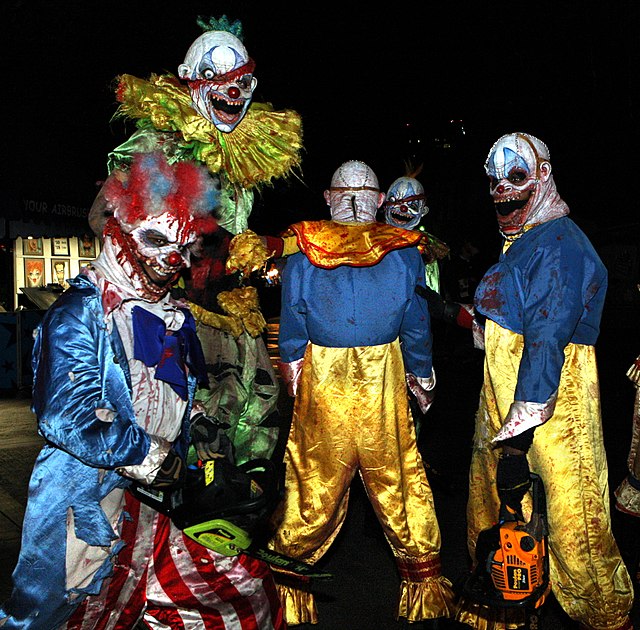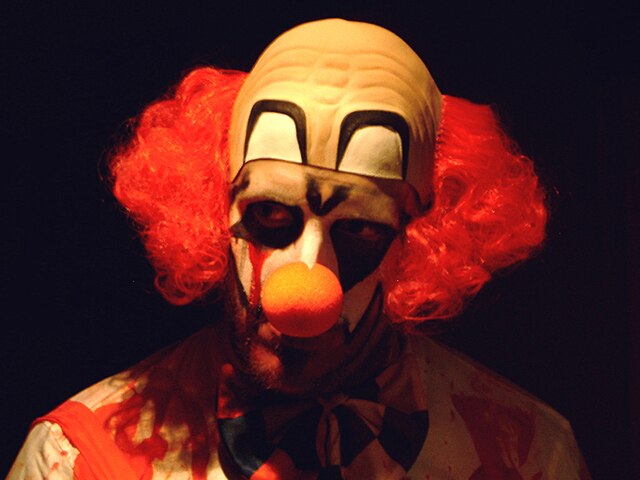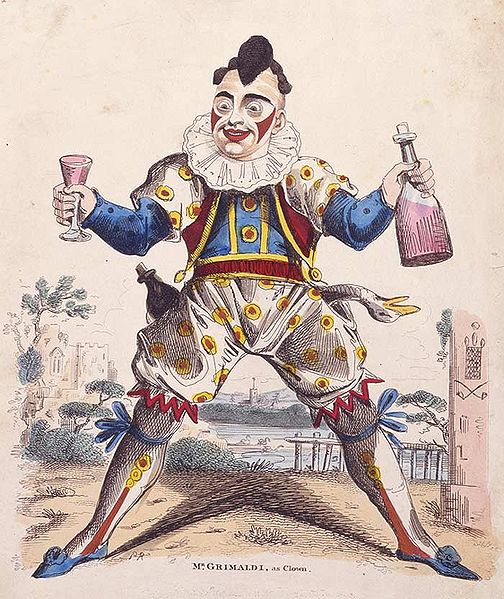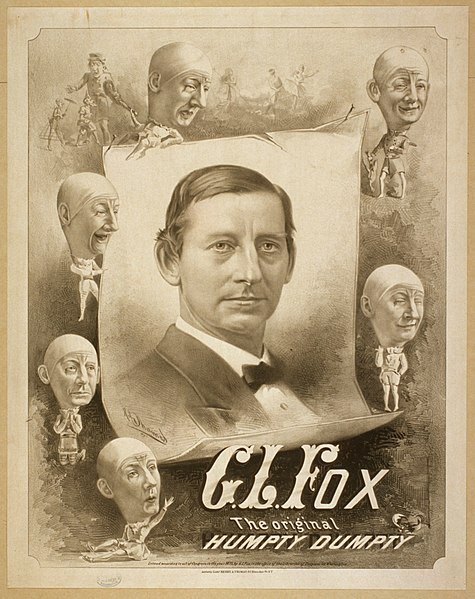The evil clown, or creepy clown, also known as the killer clown if their character revolves around murder, is a subversion of the traditional comic clown character, in which the playful trope is instead depicted in a more disturbing nature through the use of horror elements and dark humor. The modern archetype of the evil clown was popularized by the DC Comics supervillain Joker starting in 1940, and again by Pennywise in Stephen King's It. The character can be seen as playing on the sense of unease felt by sufferers of coulrophobia, the fear of clowns.
A group of people in evil clown costumes at a PDC 2008 party at Universal Studios
Enrico Caruso as the murderous Canio in Pagliacci
"Evil clown" makeup and costume
A clown is a person who performs comedy and arts in a state of open-mindedness using physical comedy, typically while wearing distinct makeup or costuming and reversing folkway-norms. The art of performing as a clown is known as clowning or buffoonery, and the term "clown" may be used synonymously with predecessors like jester, buffoon, joker, fool, or harlequin. Clowns have a diverse tradition with significant variations in costume and performance. The most recognisable clowns are those that commonly perform in the circus, characterized by colorful wigs, red noses, and oversized shoes. However, clowns have also played roles in theater and folklore, like the court jesters of the Middle Ages and the jesters and ritual clowns of various indigenous cultures. Their performances can elicit a range of emotions, from humor and laughter to fear and discomfort, reflecting complex societal and psychological dimensions. Through the centuries, clowns have continued to play significant roles in society, evolving alongside changing cultural norms and artistic expressions.
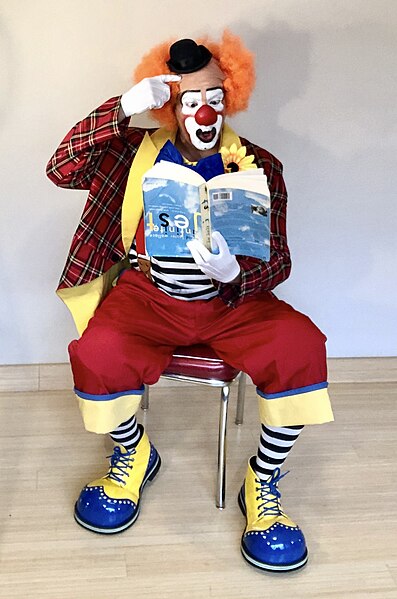
A typical clown of the Western "buffoon" tradition
Joseph Grimaldi as "Joey" the Clown, c. 1810
Les Rossyann, white clown and clumsy Auguste from France
G.L. Fox, the original Humpty Dumpty, c. 1860s

